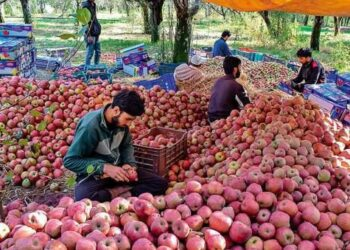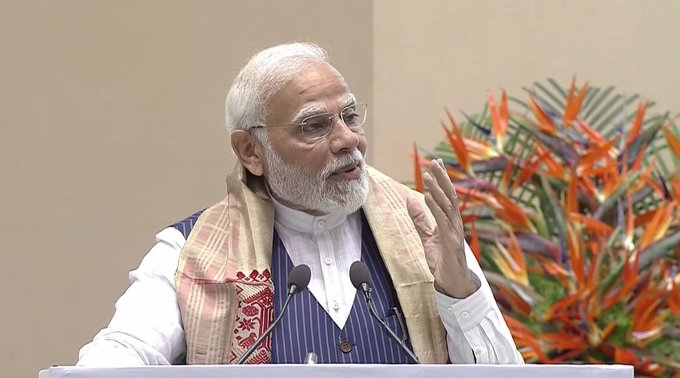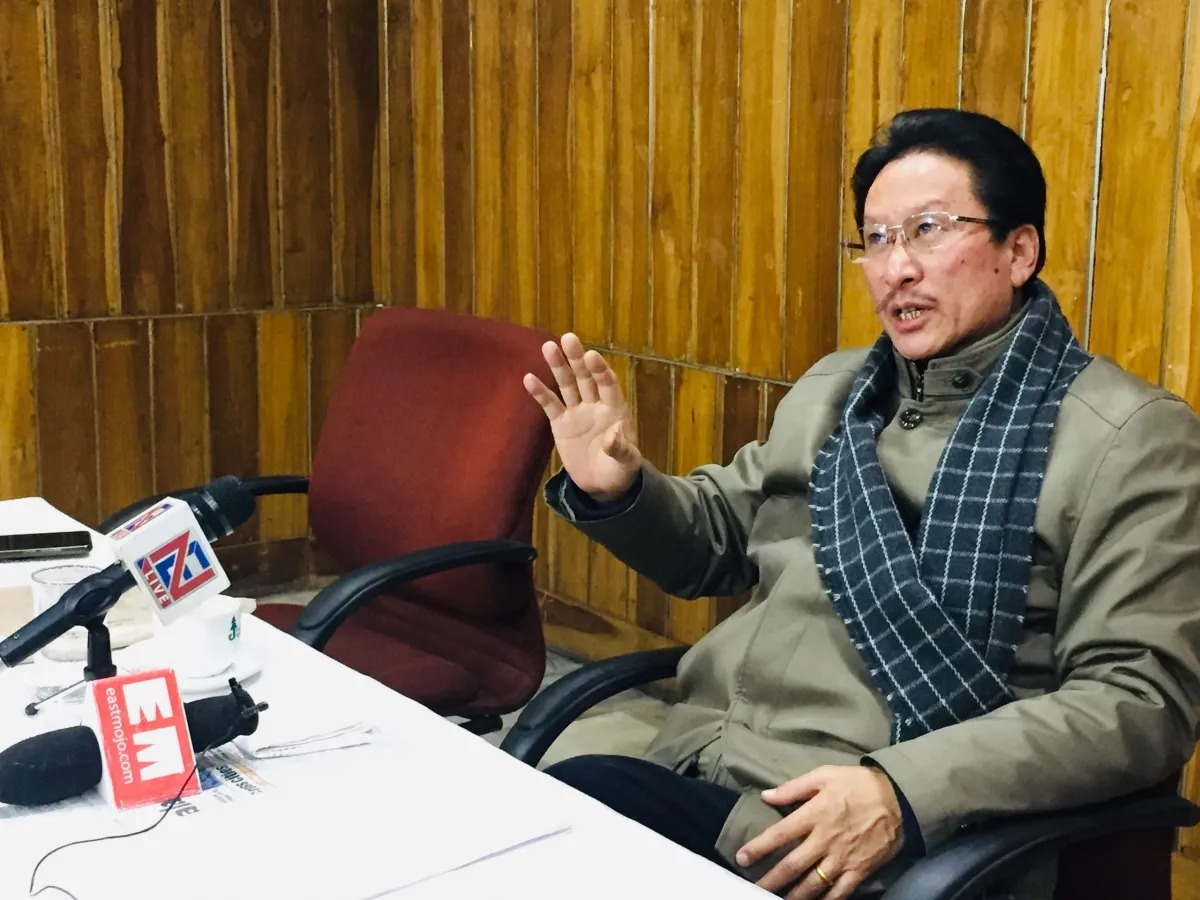What might go against BJP in Saurashtra region
1. Sidelining of Keshubhai Patel. Modi himself shifted base from Rajkot to Maninagar in Ahmedabad.
2. In 2017, BJP's CM face Vijay Rupani was from Rajkot, but now replaced.
3, There was violence against Dalits. Una episode was here. - In July 2016, seven members of a Dalit family were assaulted by a group of people in pretext of cow protection in Una, also called Unnatnagar is a town under municipality in Gir Somnath district.
Saurashtra Political Pulse: AAP, Congress fight might help BJP
Rajkot (Gujarat)
Stage is almost set for Dec 1 - phase one - polls in Gujarat wherein voters will exercise their franchise in 89 assembly segments.
Saurashtra is always an important region of 182-assembly seat Gujarat polls. This region has a total of 48 polls and despite the 'Narendra Modi phenomenon' and and Gujarat's Asmita (pride) cards, this bloc has always created hurdles and offered serious challenges to the BJP.
Though putting up a brave face, the saffron party strategists are aware that the
Saurashtra region will yet again pose a herculean task for the BJP as the saffron party faces infighting, ineffective political management and of course overall misgovernance.
BJP poll strategists at the local level in places like Amreli say the Saurashtra region encompassing 11 districts made all the difference in 2017 elections as out of the 16 seats loss for the BJP from the 2012 tally of 115, as many as 13 of them were from the Saurashtra region.
There are multiple reasons. The socio-political built up in Saurashtra region is rural and agrarian based unlike the general 'urbansed' polity of Gujarat. One possible reason also could be because Late Keshubhai Patel was gradually marginalised in BJP's game plans and even Narendra Modi had shifted base from
Rajkot West to Maninagar in Ahmedabad.
Officials say an estimated 43-44 percent of Gujarat is in urban pockets. This somehow fails in Saurashtra where hubs such as Rajkot, Jamnagar and Bhavnagar are urbansed but most of Saurashtra is based on rural economy and social structures.
The local Congress leaders say the BJP 'weak spot' is Saurashtra and hence after 2017 polls, they worked
over time to win over Congress legislators. At least nine Congress MLAs have joined BJP in last five years.
Across Gujarat out of 160 candidates fielded by BJP in the first list, at least ten former Congress leaders
or their near and dear ones made it to the saffron party list.
The Patidar agitation was also built up from this region essentially due to agrarian stress.
In 2017 assembly polls, the agrarian Saurashtra region had played havoc for the BJP and forced it's strength to go below 100 -- that is 99. Five years before in 2012, the BJP had won as many as 115 seats.
In 2017, riding on the support of the Patidar movement and also encashing the distress of groundnut and cotton growers, the Congress could add seats around Amreli and also Somnath, Talala, and Kodinar to its kitty.
Four key seats of Dhari, Lathi, Savarkundla and Rajula seats in Amreli district also went to Congress.
Importantly, the BJP's defeat came five years back in the prestigious Somnath seat wherein Jasha Barad,
the sitting BJP MLA and a minister, was humbled by Congress nominee Vimal Chudasama.
The Congress successfully dislodged the BJP from Amreli district - winning all five seats. The BJP nominees were
humbled in three seats in neighbouring Gir Somnath district.
Thus, observers say though belated Rahul Gandhi's visit and campaign trail to Rajkot on Monday, Nov 21
was crucial.
"Even in 2022, we will do well in the Saurashtra region," says a Congress leader, Bobbhai Parmar in Rajkot.
Among the local population, groundnut farmers are agitated. At the Gondal agricultural produce marketing committee market, price of groundnut has dropped to around Rs 1,170 per 20 kg bad while it used to be Rs 1500.
But voters have not yet made up their minds. Three factors are working. One, the 'Moditva' phenomenon,
the Prime Minister's personal popularity is BJP's trump card. But there are other issues like AAP's entry this year
with its 'Delhi model' and the Congress party's low-key and 'delayed' campaign trail.
Among AAP workers the real anxious point is can the 'good will and curiosity factor' of the Delhi-Model
translate into votes.
"Freebies are not what Gujarat voters want. Of course they like good supply of electricity and water. But we are sure,
there will be indirect and hidden taxes. Gujarat's middleclass is at least not keen for any such experiment," says Aparna
Rathore, an housewife.
Of course the Morbi bridge collapse will certainly haunt the BJP and its hyped Good Governance model.
Sensing the general mood Congress leader Rahul Gandhi spoke during the campaign on the Morbi Bridge
collapse tragedy and said no action has been taken against the "real culprits" while the helpless security guard
has been put behind bars.
He alleged that the BJP follows a "corruption and commission model".
In Rajkot, the Saurashtra heartland, Gandhi said while watchmen who were posted at the site of the
accident were arrested and jailed, no action was taken against the real culprits.
Sources say the BJP is aware of the challenges. Thus in its Sankalp Patra (Manifesto), the BJP has promised
separate funds for poor people, education, AIIMS level medical facilities, and improved irrigation
facilities in Saurashtra. It has also assured 20 lakh new jobs generation in the state.
The Congress workers in the Lathi area say the Patidar parents are in dilemma. They want children to become doctors
and engineers. But all seats are reserved for others. The crop insurance also failed to address farmers' problems and
hence they feel the BJP may yet again face tough challenge in the Saurashtra.
Moreover, in Amreli district, with about 45-50 per cent of the population being Patidars and about 8-10 per cent Muslims,
the Congress knows there are "inherent advantages".
From Jasdan, a key segment in Rajkot region, BJP has fielded OBC strongman Kunvarji Bavalia. He was a former
Congress MP.
Yet again from Balasinor assembly segment in Mahisagar region, BJP nominee is Mansinh Chauhan, who had quit
Congress in 2017.
ends
Tables
What goes against BJP in Saurashtra region
1. Sidelining of Keshubhai Patel. Modi himself shifted base from Rajkot to Maninagar in Ahmedabad.
2. In 2017, BJP's CM face Vijay Rupani was from Rajkot, but now replaced.
3, There was violence against Dalits. Una episode was here.
- In July 2016, seven members of a Dalit family were assaulted by a group of people in pretext of cow protection in
Una, also called Unnatnagar is a town under municipality in Gir Somnath district.
@What can help BJP
# Bhupendra Patel, CM is a Patidar and a simple town person. His administration has been efficient
by and large.
# Modi's image is the trump card.
# Local analyst, Shantibhai Anandbhai Patel in Rajkot says, "Of course, BJP is banking on defectors. But we have to
agree most Congress turncoats were locally important leaders. They are possible capable of winning the seats irrespective of the party affiliations. Personally, all are potential winners".
Dominant Castes in Saurashtra
# Patidars, OBCs, Ahirs, Koli, Kshatriyas
Electoral calculations and Twists
It has to be noted that the two-party system in Gujarat politics started in a big way giving
crystal clear signals in 1995.
Firstly, BJP vote share increased from 26.7 in 1990 to 42.5. The seats increased to 121 (1995)
from 67 in 1990. The leap was one-third to two-third.
At the state level, Janata Dal that ruled between 1990 to 1995 did not win a single seat and out 115 candidates,
109 of them lost security deposit. These make AAP's task much challenging both in Saurashtra as well
as across Gujarat.
In Saurashtra, out of 48 seats, in the 2017 Assembly polls, the Congress won 28 seats improving its
previous tally of 15 and the BJP seats dropped by 13.
$ BJP's Water-Development plank:
A slew of measures and specially designed schemes were taken up by the BJP government to improve
water availability in the western state in general and Saurashtra in particular.
A provision of Rs 500 crore was done towards the works for laying long bulk pipeline from Bhavnagar, Gir-Somnath,
Amreli, Botad, Junagadh, Rajkot and Porbandar to strengthen the drinking water facility in the Saurashtra region.
Gujarat has also made remarkable progress in the micro-irrigation initiative where 13 lakh farmers have
been benefited by putting in place micro irrigation in approximately 21 lakh hectre area.
The much ambitious Saurashtra Narmada Avatarana Irrigation Yojana (SAUNI) project is set to supplement
floor water to about 115 existing dams. As a result of this, arid Saurashtra in Gujarat will soon have
'acchey din', Rajkot Collector, Arun Mahesh Babu, an official from Andhra Pradesh, said in March 2022.
The Phase I works started in April 2014 when Narendra Modi was still the chief minister.
This phase of works is already commissioned at a total cost of Rs 6473 crore.
"With all the three phases done, the much talked about scarcity of water would be reduced in the Saurashtra
region and in the ultimate it will strengthen existing facilities of irrigation for as much as 8,24,871 acre land,"
says Rajkot Collector Babu.
ends




























